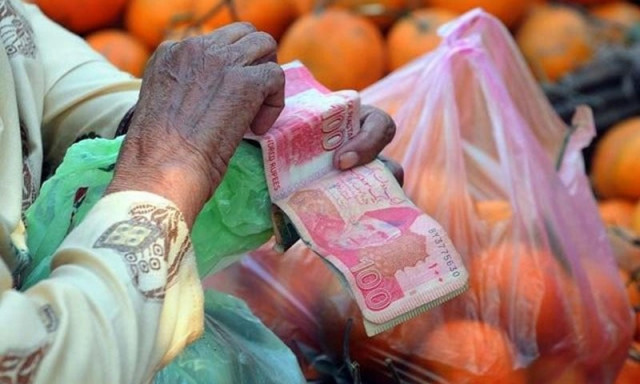Inflation soars to 50-year high
Country at the doors of hyperinflation

The annual inflation rate accelerated to 35.4% in March -- the highest in nearly five decades – as erosion in the people’s purchasing power has resulted in a surge in street crimes and stampedes as people rush to get free food.
The Pakistan Bureau of Statistics (PBS) on Saturday reported that the Consumer Price Index rose to 35.4% — a worrisome reading that the central bank may now use as a base to further hike the interest rates on Tuesday.
The 35.4% inflation rate was the highest in the past 50 years but still slightly lower than the 37.8% reading recorded in December 1973.
The data suggested that the country was at the doors of hyperinflation. The food inflation was over 50% in rural areas. There were six consumer price groups that saw the inflation rate over 40%, including alcoholic beverages and tobacco that witnessed the highest ever inflation rate of 140%.
Read more: Inflation breaks all records, climbs to 44.58%
Pakistanis have been bitten by record price hikes caused by a shortage of commodities due to floods, unchecked hoarding, currency devaluation, hike in tax rates and increase in fuel prices and electricity and gas tariffs to meet the conditions set by the International Monetary Fund.
So far, around 21 people have died, including children, across the country to get free wheat flour or receive donations, underscoring the fact that the people have lost everything to make their ends meet and the situation has reached such a critical level where people are risking their lives to get food.
Street crimes have seen a dramatic rise as robbers have been making daring attempts by snatching mobiles and looting shops in areas that were earlier considered safe in a direct challenge to the state writ.
There was hardly any consumable good that had not seen its price shot up in recent months. The PBS announced its readings just a day before the Monetary Policy Committee has scheduled its meeting. In the last huddle called on the IMF direction, the central bank had increased the interest rate to the highest ever level of 20%.
The factors that are contributing to the hike in inflation cannot be addressed by merely increasing the interest rates. In its monthly economic outlook, the finance ministry had stated on Friday that the contractionary monetary policies could not contain inflation.
Pakistan’s inflation rate was now the 15th highest in the world and it was likely to remain elevated because of the currency devaluation; hike in electricity and gas tariffs; and imposition of more taxes to meet the conditions agreed with the IMF.
The core inflation, which was calculated after excluding the volatile energy and food prices, increased in March to 18.6% in urban areas and 23.1% in rural areas.
Despite constantly increasing the interest rates, the core inflation has not receded that should be a matter of concern for the monetary policy committee members. The core inflation was still higher than the central bank’s upward revised policy rate of 20%, indicating the underlying inflationary pressures.
The inflation rate remained elevated in rural areas where it was recorded at 38.9% while it jumped to 33% in the cities, according to the PBS.
There was a huge increase in the food inflation rate, mostly because of disruption of supply chains and weak checks. The food inflation rose steeply to 50.2% in rural areas and 47.1% in cities last month, the PBS data showed.
The federal and the provincial governments are unable to ensure even the essential food supplies for the majority of the people. The prices are soaring at a time when the economy has significantly slowed down and poverty as well as unemployment surged exponentially.
The inflation rate for the transport consumer price group was 55%, recreation and culture (51%), beverages and tobacco groups (140%), and for perishable food group, it was 52%.
The price of onion increased by 258% in cities and 303% in villages in March against the same month a year ago followed by 177% increase in the rates of cigarettes, tea 105%, wheat 94%, eggs 83%, ice 82% and wheat flour 70%.
Also read: Govt paints gloomy outlook of economy
Wheat -- an essential staple food of an overwhelming majority of Pakistanis -- has exceeded their reach after the coalition government took a political decision of increasing the staple food prices by 77% to Rs3,900 per 40kg.
The prices of pulses jumped up by over 60% while vegetable ghee and cooking oil prices surged around 42% last month compared to a year ago, according to the PBS.
The non-food inflation rate increased to 24% in cities and 28.5% in rural areas.
For the July-March period of the current fiscal year, the data showed that the average inflation rate stood at 27.3%, which was more than double the official target of 11.5% for the current fiscal year set before the floods.



















COMMENTS
Comments are moderated and generally will be posted if they are on-topic and not abusive.
For more information, please see our Comments FAQ